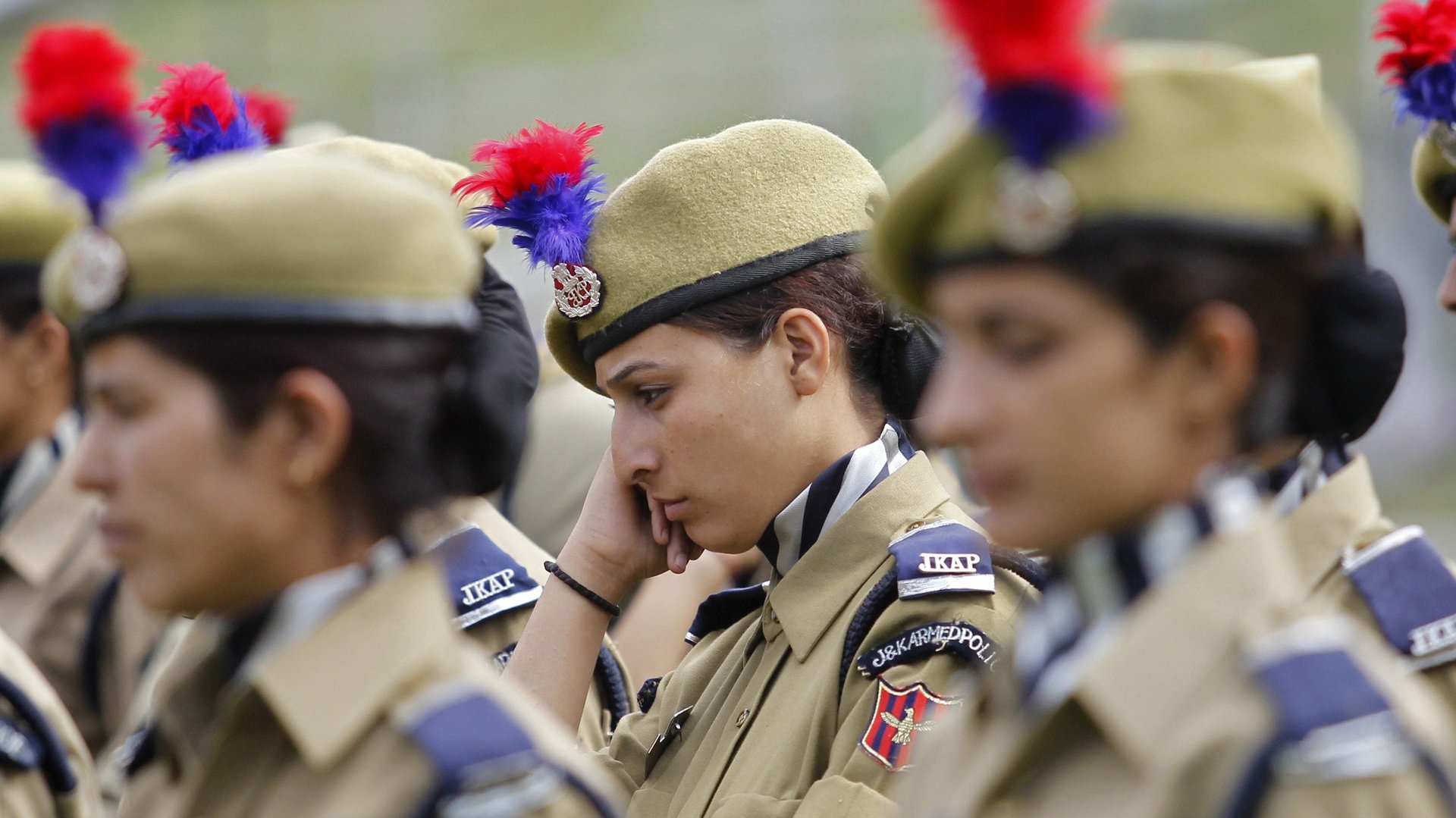India wants a third of its police force to be female—but it’s not even close
The representation of women in India’s police force is dismal.


The representation of women in India’s police force is dismal.
With just 215,000 women, only 10% of the Indian police is female, Nityanand Rai, minister of state for home affairs, said in a written reply in the Lok Sabha (lower house of parliament) on Aug. 10. The data are from Jan. 1, 2020.
The figure is significantly low given the central government has been recommending states ensure that at least a third of their police personnel are women for years now. A sizeable female presence in the force becomes especially crucial when handling sensitive cases pertaining to women and children.
The low diversity persists despite several states having quotas for women police personnel and initiatives like women-only police stations.
Best and worst states for women police in India
India’s most populous state, Uttar Pradesh, has the highest number of female police personnel at nearly 30,000.
However, in terms of percentage, women still comprise under 10% of UP’s entire police force.
The state that comes out on top is Bihar at 25%. And that’s likely by design. The eastern state has the highest reservation for women at 35%—38% if you include the 3% reservation given to women from backward castes.
The worst ratio is in Jammu & Kashmir where just three in 100 police personnel are female. Going by precedent, the former state (now two union territories) is pegged to be over 3,500 years away from reaching the 33% goal.
But all hope is not lost. The government has said it is putting effort to enroll more women.
No women police at the top
“All the state governments have been requested to create additional posts of women constables/sub-inspectors by converting the vacant posts of male constables,” Rai wrote in his response. “The aim is that each police station should have at least three women sub-inspectors and 10 women police constables so that a women help desk is manned round the clock.”
Police stations must also provide “housing and medical facilities and restroom facilities for women police personnel” to attract more talent, Rai added.
But creating low-level positions will only be half the battle won. The top brass is still almost all male.
The majority of the women in the force—over 173,000—hold the lowest post of constable. Only five women held the top rank of director general of police (DGP) on Jan. 1, 2020. Subsequent positions of additional director general of police, inspector general of police, and deputy inspector general of police also see less than 50 women across India.
The divide exists because far fewer women than men even vie for the Indian Police Services exam, which is a requisite for these higher positions. The share of women joining civil services in India is less than 25%.
And even after they make it, they face gender bias and report high levels of job dissatisfaction.
“More often than not, women have to deal with bigotry, as most male colleagues tend to have a disparaging attitude towards them. Their abilities are doubted and they have to often put up with rude or supercilious behaviour or remarks,” Sanjay Kundu, DGP in Himachal Pradesh, wrote in a recent op-ed. “All of this needs to be addressed by better training and an attitudinal change. Training modules also follow the old male-dominated versions and the need to develop gender-sensitive training cannot be overemphasised.”